Some links on this page may contain affiliate links which means that, if you choose to make a purchase using the link, Agricfy.com may earn a small commission at no extra cost to you. For more information, go to our Affiliate Disclosure Page!
Introduction
Fish farming using the biofloc method is a natural process. Biofloc fish farming involves raising fish in ponds while treating the water with certain bacteria. These microbes transform the fish excrement into usable materials. The water is subsequently recycled and used once more in the ponds.
Dr. Nandlal Jasbir Singh created the biofloc system in 1953 at an experimental farm close to Ludhiana, Punjab. Several businesses received technological licensing and set up biofloc facilities domestically and internationally. The quality of fish raised in ponds and reservoirs has improved thanks to biofloc technology, which successfully reduces pollution.
Types of Fish That Can Be Farmed In Biofloc
As the demand for inland fish farming increases, people are switching to biofloc as an alternative to other conventional forms of fish farming. A commonly asked subject is which fish is better to start with and which should be chosen.
To create high-quality harvests for your biofloc fish farm, let’s look at some fish that best adapt to the process.
- Tilapia
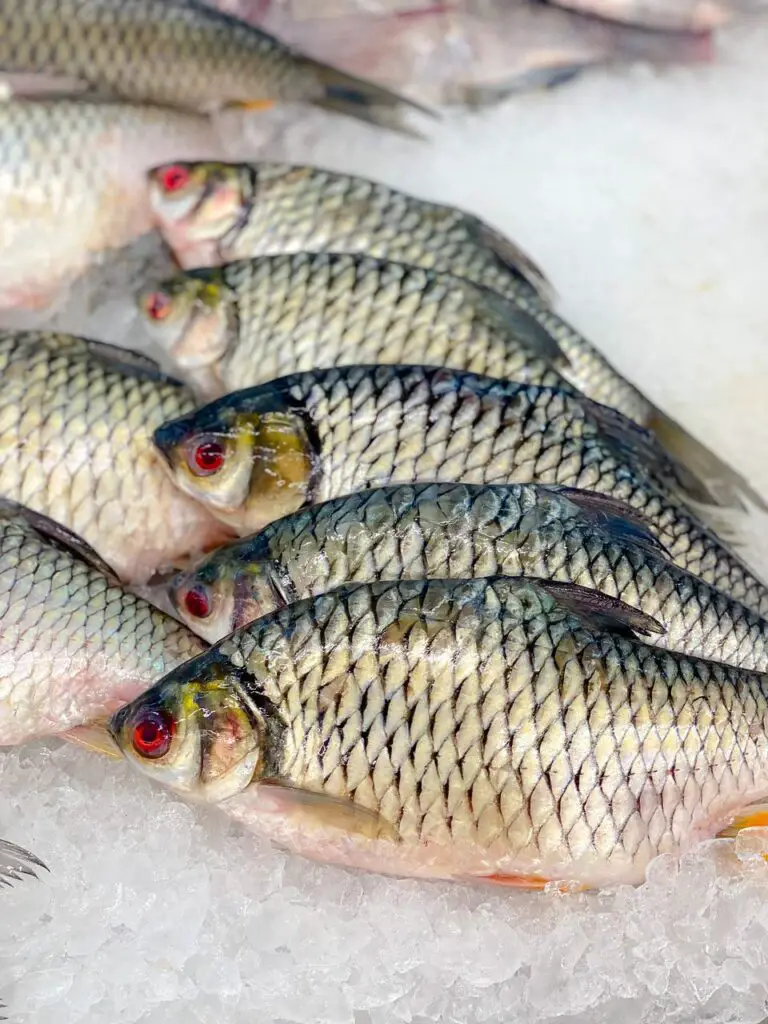
Tilapia is one herbivorous fish that has adapted well to the BFT system. Tilapia biomass in a well-run BFT tank may reach 200–300 mt/ha. It is well-liked in the market due to its fleshiness, simplicity in preparation, mild flavor, lack of strong odor, and affordable cost.
Its invasive character has been cultivated worldwide in various ponds and tanks due to its invasive character. Therefore, a biofloc fish farm is an ideal infrastructure for this kind of fish.
If you’re curious about starting a tilapia fish farm including the requirements, then check this article on how to start a tilapia farm. It will help you with the information needed to successfully farm tilapia coupled with using the biofloc system.
- Salmon
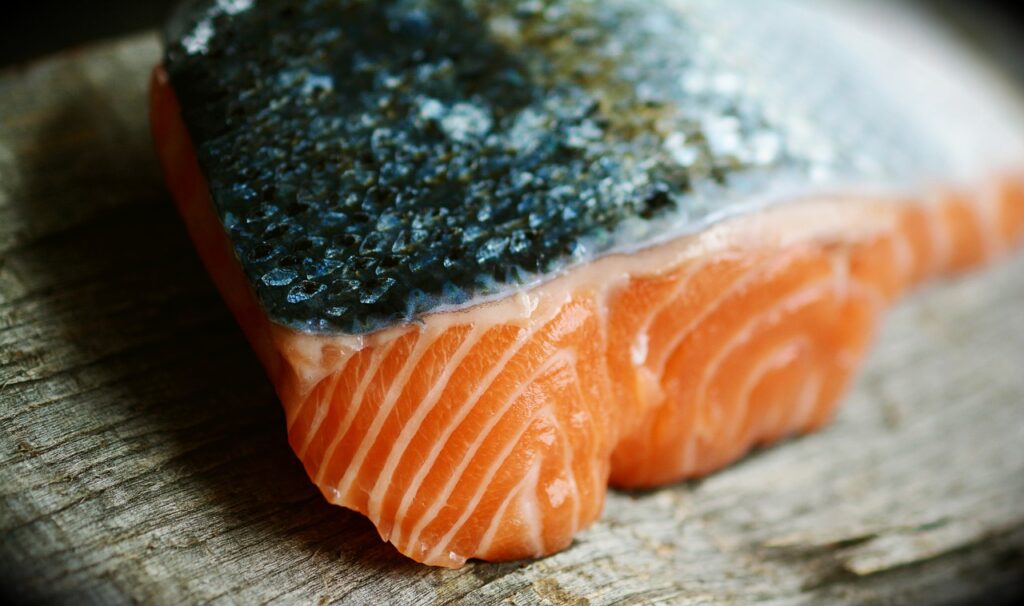
As a result of its gigantic size, meaty texture, and characteristic orange flesh with a white vein-like pattern, salmon is among the most well-known fish species in the world. While an adult salmon weigh between 4 and 5 kg, a king salmon can weigh up to 10 kg or more. After hatching in freshwater, salmon frequently migrate to the ocean before returning to breed. But a handful of species have populations exclusively found in freshwater, making them an excellent choice for a biofloc fish farm environment.
Because of its high protein content (between 20 and 30 g per 100 g of fillet), Indian salmon, or rawas, is known to support healthy metabolic activity in people. This makes it an incredibly nutrient-dense part of a balanced diet. Salmon cultivation has made it more affordable and readily available throughout the Indian subcontinent, even though it is naturally abundant along the west coast.
- Shrimp
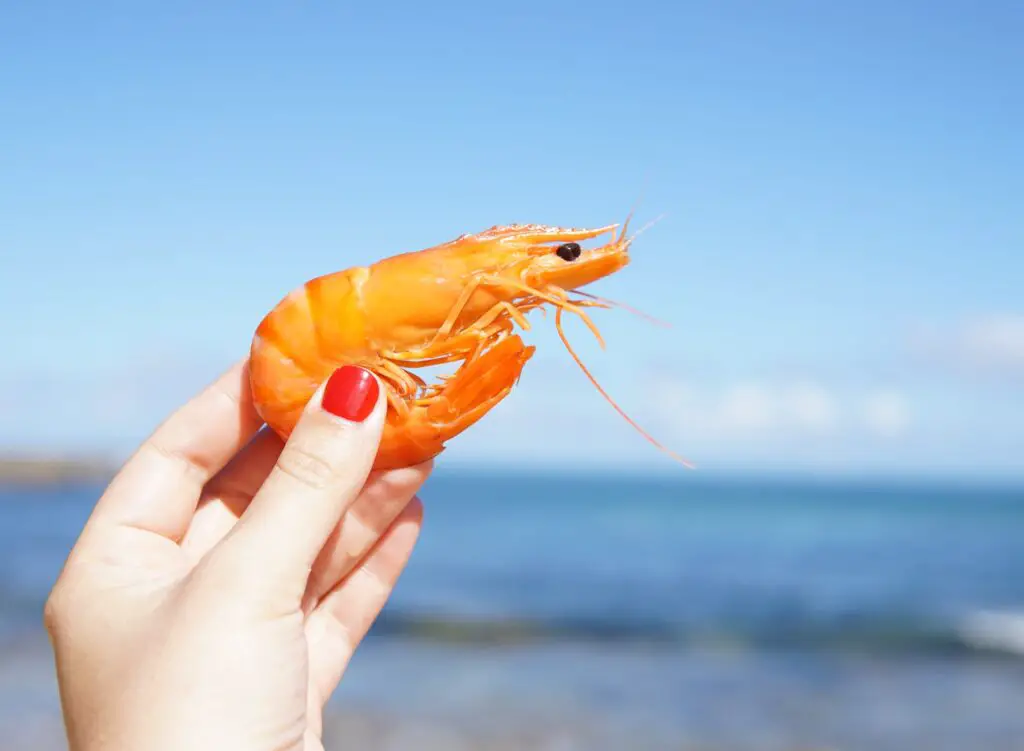
Despite being smaller than prawns, shrimp are identical in size and flavor. Both are crustaceans, and while shrimp may only be found in saline, saltwater habitats, prawns can also be found in brackish, slightly salty, or even freshwater conditions. But both of these kinds are appropriate for the Biofloc fish tank setting.
- Carp
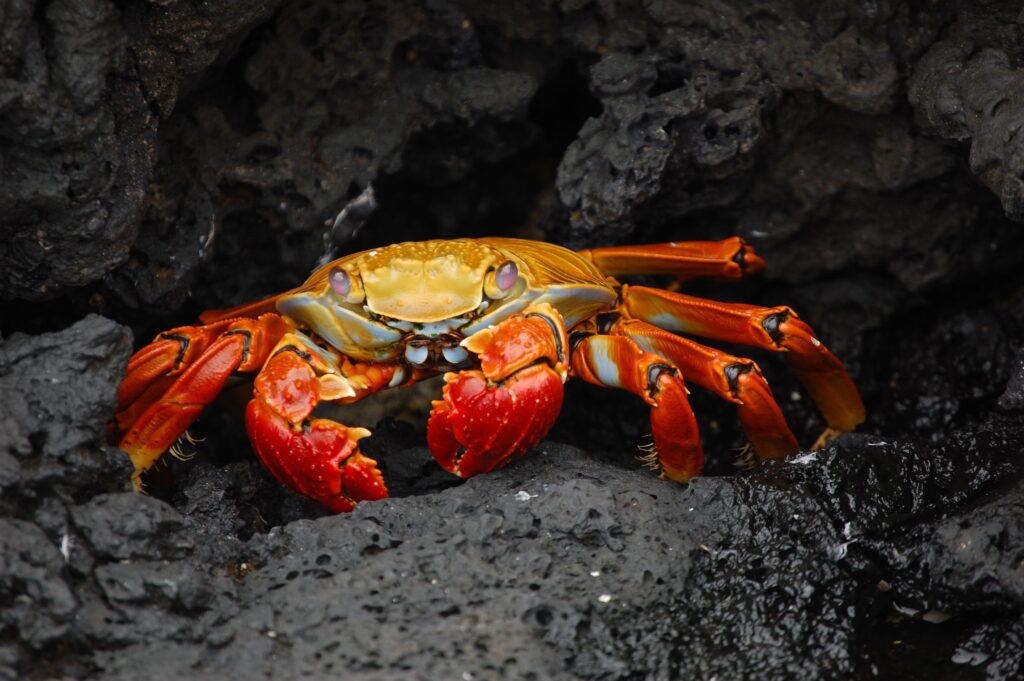
A lean fish with European and Asian origins is the freshwater carp. This omnivorous species has effectively adapted to both the biofloc fish farming method and a variety of alternative feed sources. For this species, water should be between 23 and 30 degrees Celsius. These fish can withstand a salinity of up to 5% and hard winters. The pH range should be between 6.5 and 9.0 for this fish to thrive. These fish are well recognized for their hardiness, as they can endure both supersaturation and low oxygen concentrations (0.3–0.5 mg/liter).
- Trout
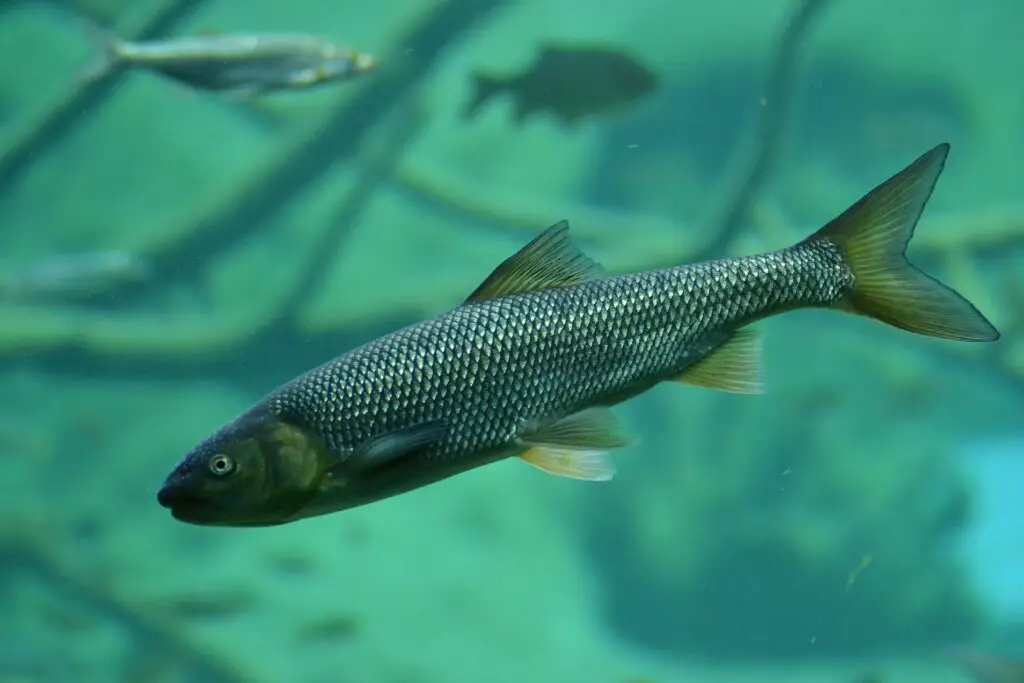
Since this fish has special camouflaging skills that allow it to adapt to its environment, surroundings, and habitat, trout, a member of the salmon family and predominantly a freshwater species, have a wide spectrum of colors that vary from place to region. As part of BFT systems, trout can be kept in tanks and fed on smaller fish and aquatic invertebrates. Because it provides roughly 18 grams of protein per 100 grams of fillet, this fish is a popular and affordable source of healthy fats and other nutrients.
Steps of Biofloc Fish Farming
Step 1: Setting up the pond/ tank
The first and most crucial thing to be done is locating the tank or pond where the cultivation will occur. This could be difficult if you are unaware of the subtle factors that affect development, such as the placement of the sunlight, the temperature of the environment, the amount of ventilation, etc. However, it typically grows with time, along with knowledge and skill in the craft.
All of the factors mentioned above do, in fact, have some effect—whether slight or significant—but here’s the key insight: If you’re thinking about building a pond, make sure that the bottom is protected with some kind of barrier so that the soil won’t affect the water’s level. This is because the main contaminants originate from the pond’s bed, which is occasionally contaminated with heavy metals like arsenic, methylmercury, selenium, cadmium, and fertilizer residue.
In this case, choosing a tank over a pond would be the smartest move. And if a pond is the only option left, border it with concrete.
Step 2: Aeration
Therefore, if you have completed the steps mentioned above correctly, we will go on to the next and most crucial phase, which is the installation of aerators. The system’s aerators are in charge of preserving the entropy of the suspended particles of algae, bacteria, protozoa, and other organisms that provide food for the fish. They also maintain an ideal oxygen level throughout the tank or pond to avoid the development of anaerobic zones, which encourage the production of ammonia and methane.
This may cause the mixture to smell, lowering the harvest’s quality. Additionally, organizing the aerators will help create a laminar and silent flow, which can help you save energy and money because it directly impacts the quality of the produce.
Step 3: Selection of species and other related stuff
Okay, did you finish the prior step? If you respond “yes,” we will proceed to the next and most crucial stage, “selection of species.” Almost every other fish species can be grown using Biofloc, thanks to the improved culture water quality. Still, some species, like catfish and barbs, have been discovered to have difficulties thriving in the culture water due to the high solid suspended particle content that makes the water too murky for them to effectively grow. What is the solution, then? It’s not that challenging!
We would like to have a species that is the most biologically efficient for that certain culture, water, and environment. How do we approach doing that, then? The answer is on the Internet! Thanks to the abundance of data based on all the abovementioned characteristics available on the Internet, finding your ideal mate would only take a few clicks. Therefore, we must be cautious about what our guests consume, but in a very scientific way, since we have chosen the best species for your farm.
Step 4: Optimization of Carbon and Nitrogen
Let’s quickly review the optimization section without delving into the technical details of the science.
In the unlikely event that something goes wrong, such as one of the aerators failing to function, there is a very small risk of ammonia peaks entering the system. Due to the high concentration of nitrogen in these conditions, ammonia can build. If it persists for a while, it could become a nightmare for your fish and flocs. These carbohydrates include carbon, which enables the heterotrophic bacteria to grow and produce ammonia, maintaining water quality.
So once more, dealing with carbon optimization is important. Let’s examine the opinions of specialists on the subject. “ As this stimulates the growth of these heterotrophic bacteria, we suggest you only choose carbon sources and feed mixes with a carbon-to-nitrogen (C/N) ratio above 10. Additional inputs are required to increase the C/N ratio from the typical 9:1 or 10:1 found in fish and shrimp meals to between 12:1 and 15:1.
Any substance with simple sugars that decomposes quickly, such as molasses, cassava, hay, sugarcane, or starch, may be used. Reducing the protein composition of the feeds being used is another option. This phase should be repeated to minimize ammonia peaks at later stages of the production process, particularly when employing high stocking densities and significant volumes of artificial feeds. One of the most challenging aspects of properly putting Biofloc’s principles into practice is controlling this.
Step 5: Biofloc growth
Now that you’ve completed the procedures above let’s investigate the world of Biofloc growth. Everything has been put up so far in what might be the optimal way. Now is the right time to start our cultivation. We will add some probiotics, and seeds of different bacteria, protozoa, and algae to the culture water to speed up the process. The flocs would go from almost nonexistent to four to five per milliliter within a few weeks.
What’s the big deal here—this is rather understandable, wouldn’t you say? You are completely correct until you learn how the next few weeks’ progress went. This is exponentiation’s power. The floc number would cause mayhem and expand incredibly quickly within a few days as if a nuclear fission event had been sparked. And surprise what, the culture water now contains roughly 10 billion bacteria per cubic centimeter.
Isn’t that incredible? A cone-shaped beaker or flask can be used to collect many water samples at a depth of 15 cm to 25 cm, ideally in the late morning, to monitor the growth of these flocs. 20 minutes should be given for the solid particles to settle. It will be simple to count them since they will adhere to the sides of the cone-shaped beaker.
Step 6: Monitoring, Harvest, and Clean-up
The two Biofloc varieties’ activity and relative densities must be regularly monitored in the pond water. A tipping point where the water stays brown will be achieved as the stock grows and feeding volumes rise. The Biofloc system must be considerably aerated once it turns brown to maintain a high respiration rate. The aerators and the power system that supplies the energy to drive the system should be well-maintained and watched over.
Water quality metrics, particularly dissolved oxygen and ammonia levels, should be monitored to determine whether the system is operating effectively or whether further aeration is required. It is necessary to regularly monitor the farm stock’s performance, including measuring and recording growth rate, general appearance, FCR, and animal survival. Comparing current farm data to the earlier, conventional non-Biofloc farm operations, you should thus observe a significant increase.
A farmer can see a difference in cost and profitability after taking the steps. After harvest, it is crucial to thoroughly clean and ready the pond setting for the raceway. Heavy metal can accumulate over time in culture water, making it unsafe to consume the stock solution. To start your next profitable batch, you must thoroughly clean up.
Biofloc Fish Farming Requirements
The prerequisites for biofloc fish farming are as follows:
- Before beginning any biofloc fish farming venture, the land should be free of all pollutants, and water pollutants should be tested.
- The water source must be clean enough to encourage the growth of algae and other microbial species that fish eat.
- The pH should range from 6 to 8. (neutral). The alkalinity of lakes and ponds used for biofloc fish farming must be maintained since algae require alkaline conditions for growth.
- Water temperatures should not exceed 25 degrees Celsius because, above this point, algae begin to die from extreme heat stress. By cooling water below the temperature of the surrounding air by introducing oxygen, a device known as an aerator can be used to regulate temperature.
Biofloc Fish Farming Equipment
- PVC Tarpaulin tank
- PH Meter
- TDS Meter
- Ammonia test kits
- Do Meter
- Do test kit
- Aco 004
- Aco 006
- Resin ip 100
- Probiotic
- Nanobubble tube
- Air stone
- Air pipe
- Air Control Valve
- Inhoff cone
- Weight scale
Advantages of Biofloc Fish Farming
- Eco-friendly: Fish and shrimp benefit from the flocs’ high protein and adequate vitamin and phosphorus content. The water quality can be improved, and toxic nitrogen can be immobilized by allowing the microbial flocs to reproduce.
- Increased productivity: If farmers compare the system to traditional aquaculture methods, they will find it more productive. This procedure can improve growth rates, boost larval growth, and reduce mortality rates.
- None or a small amount of water replacement: Utilizing biofloc technology leads to better water and land use rates. The system relies on almost zero water exchange, so production has a minimal overall environmental impact.
- Controls diseases and stops the spread of pathogens: Microbes that are bad for you are killed by the probiotics in the mixture. Also, diseases and pathogens in one container won’t spread to another, keeping the whole culture from dying.
- Feed costs went down: Feed costs are cut by 30–50% in the end because feed is used more efficiently, and lost feed is brought back to life. In traditional culture, there is no way to get back lost food.
- Easy to harvest: It’s easy to harvest when there are a lot of plants in a small area, and the plants are spread out.
Disadvantages of Biofloc Fish Farming
- More energy is needed to mix and oxygenate the water.
- Response time is slower because the rate of water respiration is high.
- Start-up period required
- Needs alkalinity supplementation
- The buildup of nitrates could cause more pollution.
- Systems that are exposed to sunlight have inconsistent and seasonal performance.
Conclusion
Numerous studies have demonstrated that species that live near the bottom, such as shrimp and tilapia, are best suited for the generation of biofloc. Fish must be reasonably resilient to environmental difficulties since the number of germs in the water continually changes. Sensitive species won’t flourish in this setting. For biofloc fish farming, I advise using a closed management system. Managing biofloc systems might be simpler by a compartmental design, in which fish production and microbial growth occur in distinct areas. Farmers would have more control over the manufacturing process thanks to the compartmental architecture, ensuring that their investments in biofloc result in higher yields.
Write more, thats all I have to say. Literally, it seems as though you relied on the video to make your point. You definitely know what youre talking about, why waste your intelligence on just posting videos to your blog when you could be giving us something informative to read?
Thank you. I make videos to compliment some points. There are those that prefer to watch & listen than reading. But I’m at your service. I will continue to write more articles.
Top site ,.. amazaing post ! Just keep the work on !
Great write-up, I am regular visitor of one抯 blog, maintain up the nice operate, and It is going to be a regular visitor for a lengthy time.
Hm,.. amazing post ,.. just keep the good work on!
Top ,.. I will save your website !